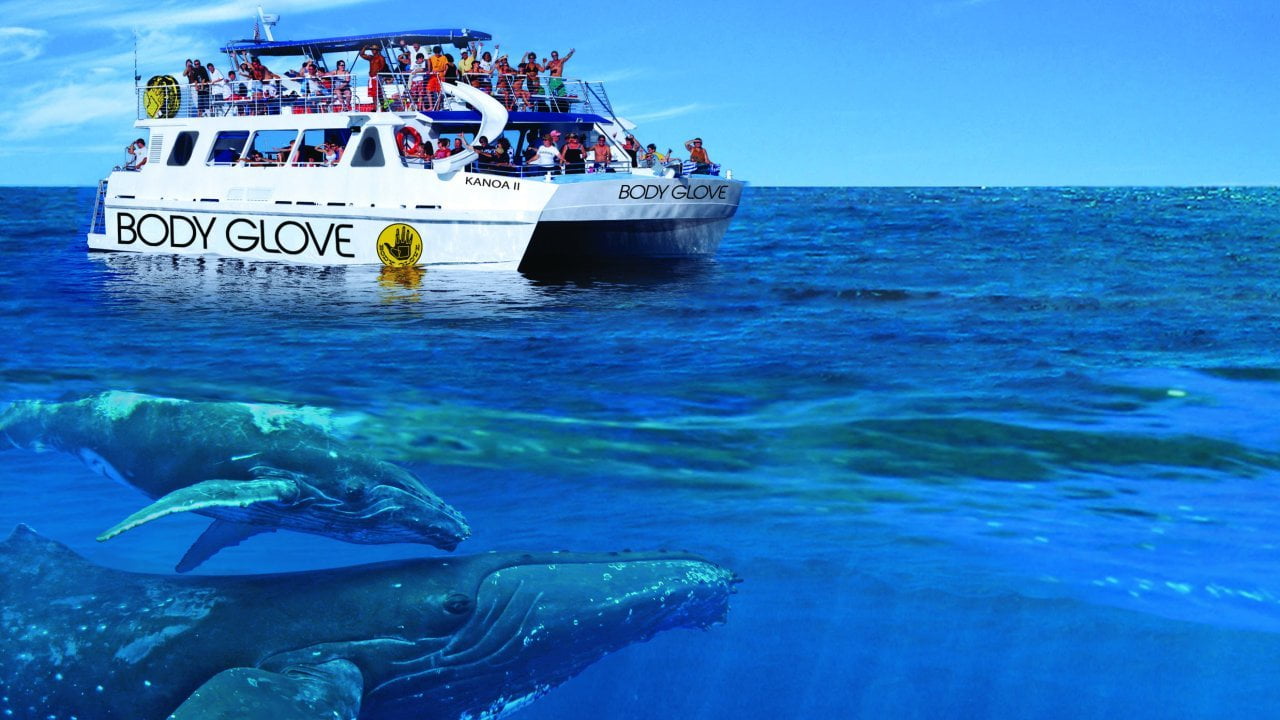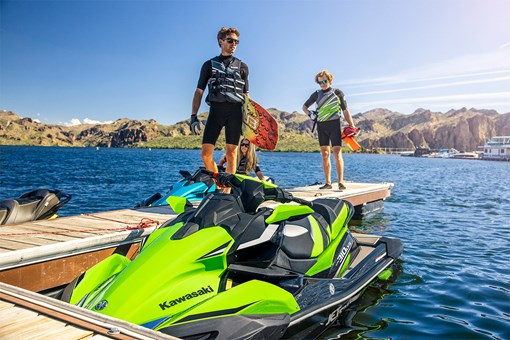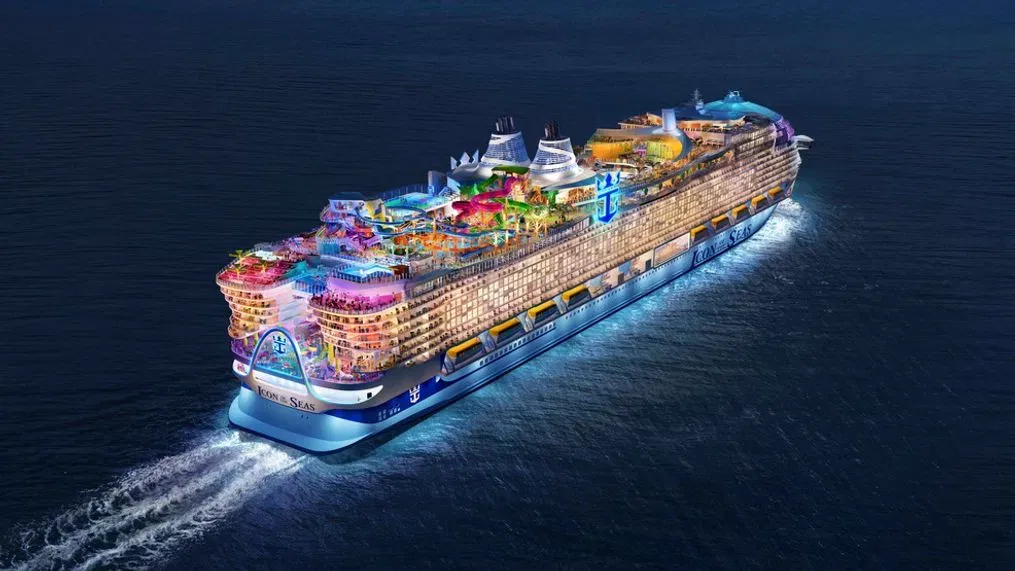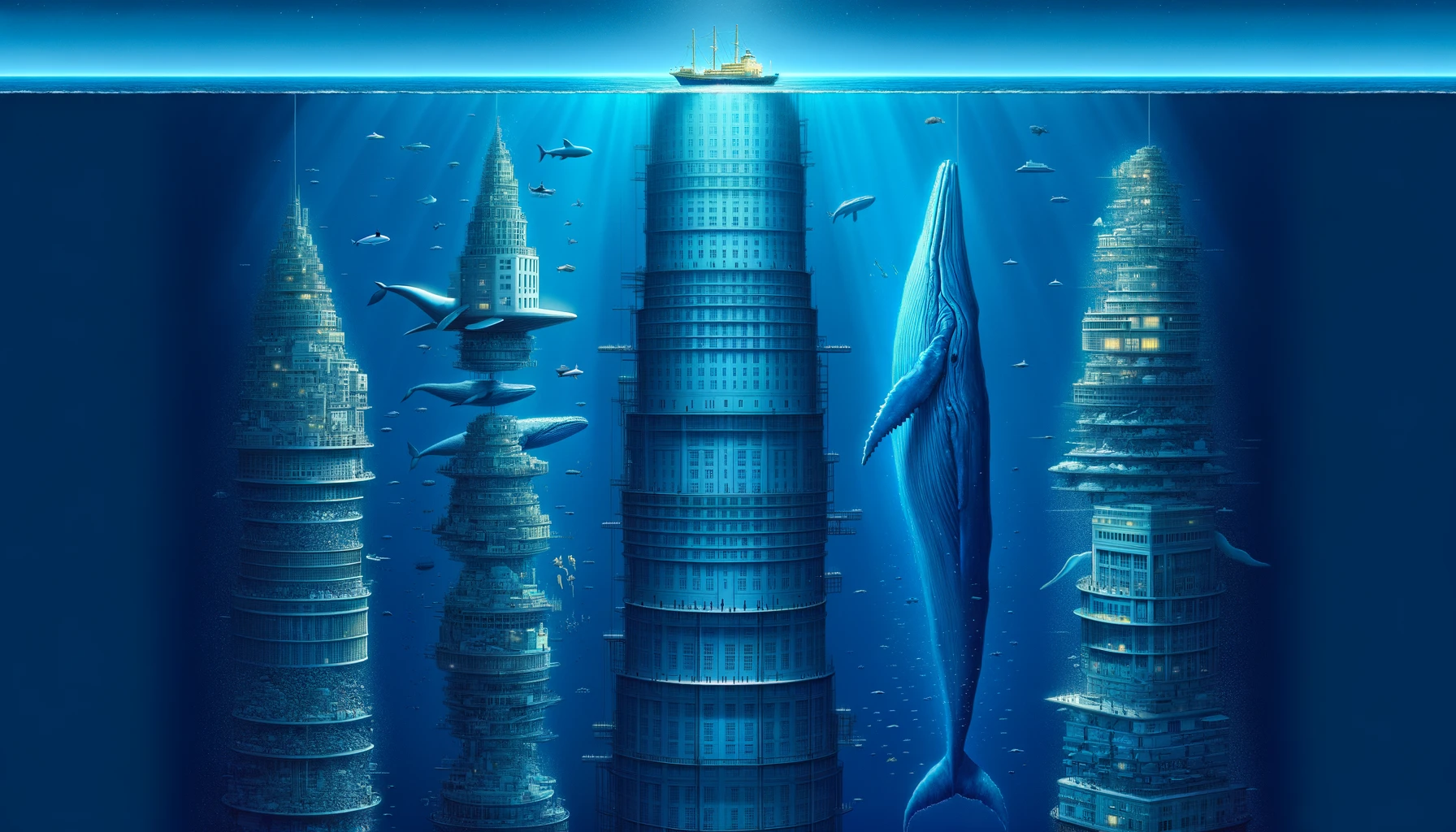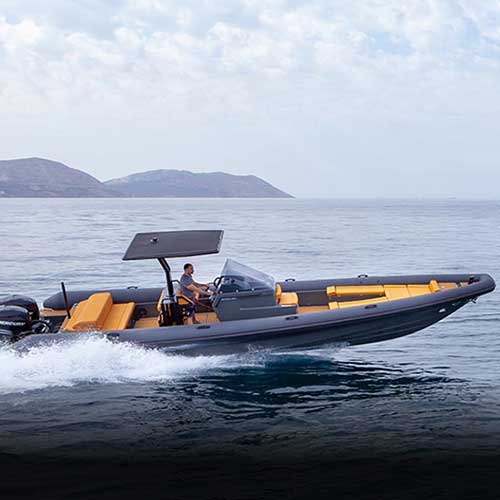Tritoon Boats: Unleashing Versatility and Performance on the Water
Tritoon boats have gained popularity in recent years for their versatile and high-performance design. These versatile watercraft are a modification of the traditional pontoon boat, encompassing a third, central tube in their structure. This addition not only enhances the boat's performance but also increases its stability, making it an attractive choice for a wide variety of on-water activities and uses.
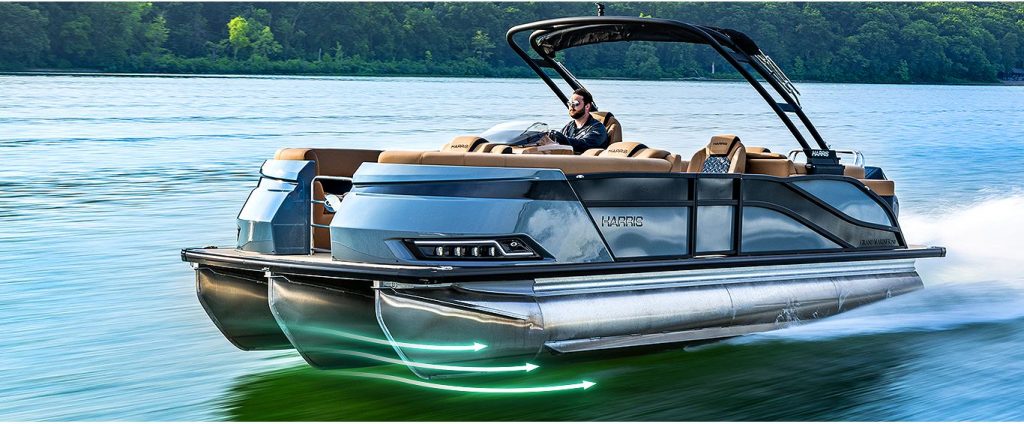
Understanding the design and construction of tritoon boats is essential to appreciate their benefits fully.
The third tube provides added buoyancy and improves the overall handling of the boat, allowing for a smoother ride in rough waters. Tritoons' performance aspects differentiate them from their pontoon counterparts, as they often boast higher speeds, better fuel economy, and the ability to tow water-skiers and wakeboarders.
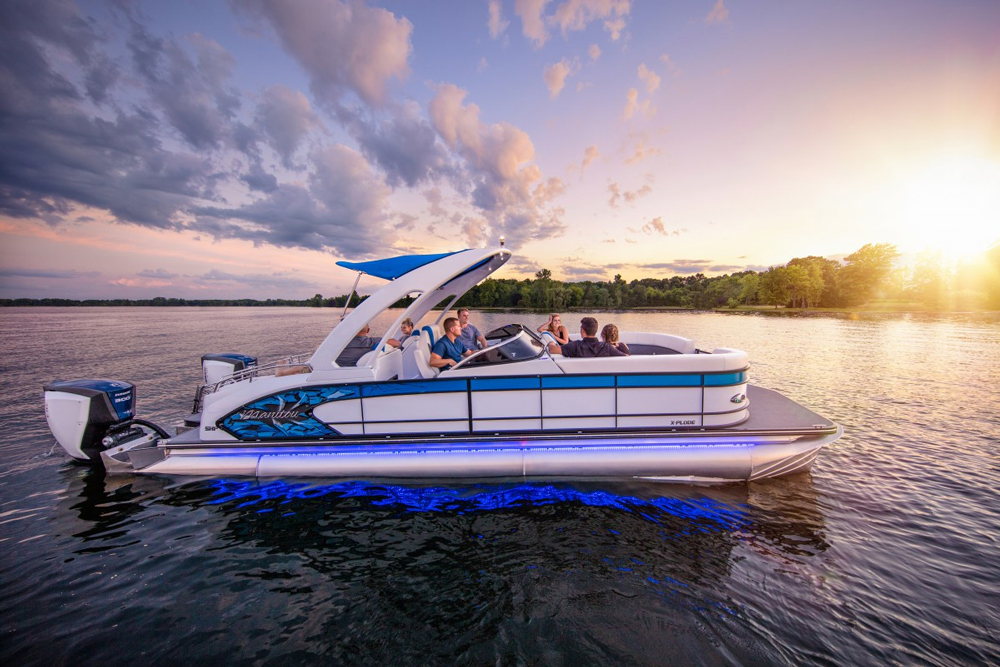
When considering a tritoon, it is vital to explore the different types available, as well as practical considerations such as amenities, features, and suitable activities. Additionally, understanding the ownership experience, including safety and regulations, purchasing tips, docking, and storage, will ensure a well-rounded and enjoyable relationship with your tritoon boat.
Key Takeaways
- Tritoon boats offer increased stability and performance due to their third central tube.
- Their versatile design caters to various on-water activities, including water sports and leisurely cruising.
- It is essential to consider practical aspects such as ownership, safety, and maintenance when purchasing a tritoon boat.
Understanding Tritoon Boats
History and Evolution
Tritoon boats have evolved from traditional pontoon boats, which are recreational watercraft known for their stability, spaciousness, and versatility. Pontoon boats feature a flat deck that rests on top of two aluminum tubes, providing buoyancy and support. The introduction of tritoon boats came as a response to the need for more power and performance in pontoon boats. Tritoon boats are designed with three aluminum tubes, adding an extra level of buoyancy and support for extra load-carrying capacity1.
Tritoon vs Pontoon
There are several key differences between tritoon and pontoon boats.
Performance Tritoons offer higher horsepower ratings, enhancing their overall performance2. With the increased buoyancy provided by the third tube, tritoons are able to accommodate higher-powered engines and achieve greater speeds compared to their pontoon counterparts.
Capacity Tritoon boats can generally carry more people due to the third tube, which increases their load-carrying capacity3. For example, a 23- to 28-foot tritoon boat can carry up to 15 people, while 30-foot boats can hold up to 21 people1.
Size and Stability Tritoons can be longer and wider than pontoons, typically ranging from 22 to 28 feet, sometimes even reaching 30 feet in length3. This additional length and width contribute to an improvement in stability when compared to pontoon boats.
Cost While both tritoon and pontoon boats have a wide price range, tritoons can be more expensive than pontoons. The average price of a pontoon boat ranges between $15,000 to $60,000, with top-tier tritoon models exceeding $200,0004.
Design and Construction
Hull Design
Tritoon hulls are unique compared to traditional pontoons because they feature three tubes rather than the standard two. This innovative design offers improved performance and stability. With V-Toon Technology, tritoon boats typically have a larger center tube, placed slightly lower than the outer tubes to create better hydrodynamics and hydroplaning capabilities.
Some key benefits of tritoon hull design include:
- Faster response to speed and acceleration
- Enhanced stability in rough waters
- Improved cornering and handling
- Higher weight carrying capacity
Materials and Build Quality
Tritoon boat manufacturers like Harris, Manitou, Godfrey, SunChaser, and Bennington use high-quality materials and engineering to ensure a durable and robust construction. The common materials used in tritoon boat construction are marine-grade aluminum for the hull and stainless steel for fittings and hardware.
Some build quality features found in tritoons are:
- Welded seams for added strength
- Durable and low-maintenance flooring options (vinyl, seagrass, teak, etc.)
- UV-resistant upholstery on furniture
- Coated aluminum tubes to resist corrosion
The weight and capacity of tritoon boats are significantly influenced by their hull design and build quality. The extra tube in the hull increases the boat's buoyancy, allowing it to carry more weight without compromising performance. This makes tritoon boats an ideal choice for families and social gatherings on the water.
Performance Aspects
Speed and Horsepower
Tritoon boats are known for their impressive speed capabilities, which can be attributed to their efficient design and powerful outboard motors. A typical tritoon can achieve speeds of up to 50 mph, depending on the horsepower of the engine installed. A 200 HP engine, for example, is a popular choice for tritoon owners looking to optimize speed and performance. The fuel efficiency of a 200 HP engine varies depending on the type of engine and boat design, but on average, it consumes around 10-15 gallons per hour at full throttle 1.
Handling in Different Waters
The unique three-pontoon design of tritoon boats enhances their stability and performance, especially in rougher waters. The additional pontoon provides increased buoyancy, reducing the boat's tendency to rock from side to side2. This not only improves the overall handling and maneuverability but also offers a smoother, more comfortable ride in choppy water conditions.
Some manufacturers offer customized solutions that further enhance the handling and performance of the tritoon. For example, the PTX tritoon design from Premier Pontoons is engineered to excel in various critical areas3. The third tube significantly reduces drag, allowing for faster acceleration and better fuel efficiency.
Typical horsepower ratings for tritoon boats:
- 150 HP
- 200 HP
- 250 HP
Performance-enhancing features:
- Third pontoon for added stability
- Reduced drag
- Improved buoyancy
Types of Tritoon Boats
Tritoon boats are versatile and suitable for various purposes, from leisurely cruises to high-performance water sports. This section will focus on three primary categories of tritoon boats: SportTune, SportAngler, and Luxury Pontoon.
SportTune
SportTune tritoon boats are designed for those seeking agility, speed, and performance on the water. These boats typically have powerful engines and enhanced maneuverability. Some common features of SportTune tritoons include:
- High-horsepower engines for increased acceleration
- Sleek and stylish designs to minimize drag
- Performance-enhancing fins and lifting strakes on the tubes
- Water sports towers for easy towing of wakeboards or water skis
These boats provide thrilling experiences and allow passengers to entertain themselves with various water sports activities.
SportAngler
For fishing enthusiasts who appreciate the stability and practicality of a tritoon, the SportAngler is a popular choice. Built for those who value both functionality and performance, these boats offer essential fishing features alongside their impressive handling on the water. Key features of SportAngler tritoons include:
- Rod holders for easy storage and access
- Live wells for bait and caught fish
- Comfortable seating for extended fishing trips
- Trolling motor compatibility for precise control while fishing
SportAngler tritoons enable anglers to enjoy the best of both worlds: the performance of a tritoon and the practical features of a fishing boat.
Luxury Pontoon
Luxury pontoon tritoons, as the name suggests, focus on comfort, style, and sophistication. Perfect for those who wish to entertain guests on the water or who simply want to relax and enjoy a serene cruise, these boats can be customized to suit specific needs and preferences. Notable features and amenities of luxury pontoon tritoons include:
- Plush and spacious seating areas
- Top-of-the-line sound systems
- Customizable lighting and mood settings
- High-quality materials and finishes for ultimate comfort and style
Practical Considerations
Capacity and Size
When choosing a tritoon, one of the main factors to consider is its capacity and size. Tritoon boats can accommodate more people than regular pontoons due to the third toon. A 23- to 28-foot boat can carry up to 15 people, while 30-foot boats can hold up to 21 people. It is important to ensure that passengers are spread out on the boat, avoiding crowding on one side or in one area.
Tritoon sizes vary widely and can have a direct impact on how the boat performs and how many passengers it can accommodate. As the boat size increases, the carrying capacity usually increases as well. However, keep in mind that larger boats may also require more powerful engines and can be more challenging to maneuver.
Weight Limitations
In addition to passenger capacity, tritoons have weight limitations to consider. Make sure to account for not only the passengers' weight but also the weight of any gear and equipment on board. Exceeding the weight limit can lead to decreased performance and even unsafe conditions.
It is crucial to verify the boat's weight limitations before making a purchase. You can typically find this information in the owner's manual or by contacting the manufacturer. Ensuring that the tritoon's carrying capacity meets your needs – from passengers to additional equipment like water toys or fishing gear – will help guarantee an enjoyable and safe experience on the water.
Remember that tritoons tend to have higher weight limits than traditional pontoons. This is due to the extra buoyancy provided by the third toon, which allows them to carry more weight without sacrificing stability.
Amenities and Features
Comfort and Layout
Tritoon boats are known for their spacious and comfortable layouts, providing ample room for passengers to relax and socialize. The seating arrangements typically include chaise couches, sun pads, and adjustable captain's chairs at the helm. Some models even have built-in tables and bar areas, making the tritoon perfect for waterfront dining and entertaining.
Deck space is another aspect that enhances comfort, with tritoons offering wide-open spaces, easy access to the water, and swim platforms. These layouts can accommodate up to 10 or more passengers, depending on the model and size of the boat.
Storage Solutions
Tritoon boats offer various storage options that help keep the deck clutter-free. These storage spaces include:
- Under-seat storage compartments
- Ski lockers for water sports equipment
- Glove compartments at the helm
- Dedicated spaces for cooler storage
In addition to these built-in storage solutions, some models offer customizable options, such as additional storage cabinets, drawers, or bicycle racks.
Activities and Uses
Tritoon boats are versatile and offer a variety of activities for individuals and families alike. They're perfect for water sports, fishing adventures, and simply enjoying the open water. In this section, we'll discuss some popular activities and uses of tritoon boats.
Water Sports
Tritoon boats are an excellent choice for those who enjoy water sports such as skiing, wakeboarding, and tubing. Their exceptional stability and increased weight capacity make them ideal for towing water skiers, wakeboarders, or tubers with ease. The presence of the third pontoon enhances the performance and stability of the boat, making it a popular choice for water sports enthusiasts.
- Skiing: Tritoon boats provide a smooth and stable ride for skiers, thanks to the enhanced performance offered by the third pontoon.
- Wakeboarding: The extra stability of tritoon boats enables them to create larger wakes, which are perfect for wakeboarders looking for some air time.
- Tubing: With ample space onboard and impressive handling capabilities, tritoon boats can easily accommodate multiple tubers at once, making for an exciting group activity.
Fishing Adventures
Apart from water sports, tritoon boats are also suitable for fishing adventures. Equipped with spacious decks, comfortable seating, and abundant storage, these boats offer plenty of room for anglers and their gear. Furthermore, tritoons can navigate various types of waterways, making them versatile fishing vessels.
Here are a few fishing amenities that tritoons can be equipped with:
*Live wells *Rod storage *Fish finders *Trolling motors
Ownership Experience
Cost of Ownership
When considering the ownership of a tritoon, it's important to factor in both the initial purchase price and ongoing expenses.
The cost of a new tritoon ranges from around $30,000 to over $150,000, depending on features, brand, and size.
Some popular entry-level tritoons for budget-conscious buyers include the Pond King 16′ Elite, SunTracker Party Barge, Harris Cruiser, and Lowe Pontoon SS210V.
For those interested in tri-toons, the SunTracker PartyBarge XP3, Harris 22 Cruiser, Bennington S Series, and Barletta C-Series are known for offering good value.
If you intend to purchase a used tritoon, prices can vary widely depending on factors like age, condition, and included accessories.
It's crucial to thoroughly inspect any used boat before making a purchase, as hidden issues can lead to costly repairs down the line.
Maintenance and Upkeep
Beyond the initial purchase price, tritoon owners should be prepared for ongoing operational expenses such as fuel, insurance, and storage.
Annual maintenance costs for a tritoon can range from $400 to $1,200, depending on factors like boat size, usage, and local labor rates.
Regular maintenance tasks include:
- Engine maintenance: Annual oil changes, filter replacements, and fluid checks are important to keep your tritoon's engine running smoothly.
- Cleaning: Regularly washing your tritoon and applying a protective wax coating helps preserve its appearance and protect against damage from UV rays and water exposure.
- Bilge pump inspection: Bilge pumps should be inspected and cleaned periodically to ensure proper operation and prevent damage or sinking from water buildup.
Other maintenance tasks may be required on an as-needed basis.
For example, tritoon owners should keep an eye out for signs of corrosion on aluminum pontoons and address any such issues promptly to prevent damage to the pontoons or overall structure.
Safety and Regulations
Navigational Laws
Navigational laws play a significant role in ensuring the safety of all boaters, including those operating tritoon boats.
These laws vary by state and may include regulations related to speed, lighting, and right-of-way.
It is crucial for tritoon boat operators to familiarize themselves with these laws and abide by them in order to maintain a safe boating environment.
Safety Equipment
Each tritoon boat should carry the required safety equipment in compliance with federal and state regulations.
Some mandatory equipment includes:
- Life jackets: At least one life jacket per person on board should be readily available. Life jackets should be sized appropriately for each individual.
- Throwable flotation device: A throwable flotation device, such as a life ring, should be kept on board in case of emergencies.
- Sound producing devices: Devices like whistles or horns are necessary for effective communication with other vessels during navigation or distress situations.
- Fire extinguishers: Fire extinguishers of the appropriate size and class should be readily accessible and regularly inspected.
- Navigation lights: Tritoons should be equipped with proper navigation lights for any nighttime or low visibility situations.
Aside from the required safety equipment, operators may also consider adding useful devices to their tritoon boats, such as carbon monoxide detectors, which can help prevent dangerous buildup of carbon monoxide, particularly when engines are running while anchored or moored.
Purchasing Tips
New vs Used Options
When considering purchasing a tritoon boat, new boaters need to first evaluate whether to buy a new or used boat.
Buying a new tritoon often ensures the latest technology, design, and performance features, as well as manufacturer warranties. However, it could be more expensive compared to a used option.
On the other hand, purchasing a used tritoon boat can be more budget-friendly if the price and costs of maintenance are lower.
It is essential to inspect a used boat thoroughly, particularly the hull, for cracks, patches, or chips, ensuring its quality and value (source).
Assessing Quality and Value
When assessing the quality and value of a tritoon, it is vital to consider several aspects:
- Hull Material: Aluminum pontoons are generally preferred for their durability, lighter weight, and resistance to corrosion.
- Engine: Choose an engine that meets your performance needs and local regulations. The length of the tritoon boat may limit the maximum horsepower of the engine it can support (source).
- Seating Capacity and Layout: Consider the size of your family or group of friends to ensure comfortable seating while on the water.
- Brand Reputation: Research different manufacturers for quality, reliability, and customer service to guarantee a positive long-term ownership experience.
It is also crucial to compare various models and floorplans to find the tritoon boat that best suits both your budget and preferences (source).
Don't forget to factor in expenses associated with financing, annual maintenance, and boat insurance when setting your budget.
Docking and Storage
Docking Techniques
When docking a tritoon boat, it's essential to remain calm and patient.
Tritoon boats handle differently due to their unique design and size. Many tritoon boats come equipped with advanced guide rail systems, like those offered by Gulf Stream Docks, which help elevate the pontoons above the surface of the dock to reduce friction.
With these systems in place, docking can be made smoother and easier.
Approach the dock at a slow speed, maintaining control of the boat while ensuring it doesn't drift too far from the dock. Practice maneuvering your tritoon with the engine and use the boat's natural buoyancy to make turns.

Winterizing and Storage Tips
Storing and maintaining a tritoon during winter is crucial for its longevity and performance. Proper winterizing ensures that your boat remains in good condition when it's time to head back out on the water.
- Storage Space: When storing a tritoon, you should ensure adequate storage space is available.
- Some tritoon owners make use of PVC storage tubes, similar to those mentioned on Club Bennington, for storing items such as mooring cover poles, flags, and boat hooks.
- Lifts and Covers: Investing in a good quality lift system, such as those offered by HydroHoist, can make it easier to store and protect your tritoon, helping to avoid potential damage.
- Ensure your boat lift is designed to handle the weight and size of your tritoon and is equipped with the necessary features, such as carpet or vinyl padding, to protect the boat's pontoons.
- Additionally, covering your tritoon with a durable, weather-resistant cover can keep it clean and safe from the elements.
- Engine Maintenance: Before storing your tritoon for the winter, it's essential to winterize the engine according to the manufacturer's recommendations, which may include flushing the engine, fuel stabilization, and changing oil and filters.
- Interior Care: Thoroughly clean the interior of your tritoon, removing any debris and personal items.
- Ensure any moisture present is removed from the boat to avoid mildew or mold developing during storage.
- Battery Storage: Finally, don't forget to remove the tritoon's battery and store it in a cool and dry place, preferably on a battery tender to maintain its charge.
Social and Lifestyle Aspects
Entertainment and Leisure
A tritoon offers a perfect platform for various entertainment and leisure activities on the water.
The spacious deck and smooth ride make them ideal for relaxing and soaking up the sun while enjoying the calm waters.
Moreover, tritoons are designed for better stability and handling in choppy waters, allowing for more versatility in water-based fun, such as water skiing and wakeboarding.
Some of the most popular leisure activities on a tritoon include:
- Sunbathing: The wide deck space offers ample room for sunbathing and relaxation.
- Swimming: With easy access to the water, tritoons are a great way to enjoy swimming and snorkeling.
- Fishing: Tritoons can be easily outfitted with fishing gear, turning them into the perfect fishing platform.
- Watersports: The enhanced performance of tritoons allows for watersports, such as wakeboarding and water skiing, that are more challenging on traditional pontoons.
Family and Friends Gatherings
The larger capacity of tritoon boats makes them perfect for family and friend gatherings.
With the ability to accommodate up to 21 people on some 30-foot models, there's plenty of space for everyone to enjoy the day on the water.
Additionally, the third tube's increased stability ensures that everyone on board feels safe and comfortable, regardless of their age or boating experience.
A few ways to enhance family and friend gatherings on a tritoon include:
- Outdoor dining: A tritoon's ample space and stable platform make it ideal for enjoying meals while anchored or cruising along the shoreline.
- Celebrations: Birthdays, anniversaries, or just a simple get-together can be easily hosted on a tritoon, allowing for memorable celebrations on the water.
- Games: Tritoons offer plenty of room for playing board games, card games or even creating your own water-based games.
- Sightseeing: With the increased maneuverability, tritoons allow the whole family to explore the coastline, visit remote beaches and take in the breathtaking views.
Advancements in Technology
Innovations in Tritoons
The world of tritoon boats has seen impressive advancements in technology, contributing to their versatility, reliability, and ease of use.
One popular series, the S series, offers boats with different sizes, ranging from 16 to 27 feet. The innovations in this series include:
- Improved buoyancy and stability, enabled by the third toon
- Enhanced performance and speed, due to optimized hull design
- Greater capacity, allowing for more passengers or cargo
In addition, tritoons can now be equipped with advanced technological features, such as:
- Solar-powered engines: Reducing the boat's environmental impact while providing a sustainable source of energy.
- Smart navigation systems: Seamlessly integrating GPS, sonar, and radar to make boating experiences more convenient and safe.
- Entertainment systems: Offering onboard multimedia and Wi-Fi connectivity for a more enjoyable boating experience.
Future Outlook
The future of tritoon boats is even more promising, as technology continues to evolve.
As mentioned earlier, eco-friendly features like solar-powered engines and sustainable materials are becoming increasingly popular, allowing for a more efficient and environmentally friendly boating experience.
Another consideration for the future of tritoons is the potential integration of autonomous navigation systems.
While this technology is still in its infancy, the potential for a self-driving tritoon could revolutionize recreational boating, making it more accessible and safe for new boaters.
Lastly, the advancements in electronics and onboard systems will likely make the XP series of tritoon boats more customizable, allowing boaters to tailor their tritoons to their specific needs and preferences.
Frequently Asked Questions
What are the main advantages of a tritoon over a conventional pontoon?
Tritoon boats feature a third tube, which provides increased stability, buoyancy, and improved handling compared to conventional pontoon boats.
This design makes tritoons especially suitable for water sports enthusiasts, as they can support higher speeds and rougher water conditions.
How does the cost of a new tritoon compare to traditional boats?
Tritoon boats typically have a higher price tag than traditional pontoons, primarily due to the extra hull and more complex construction. However, the enhanced performance and versatility of tritoon boats can be worth the investment for some buyers, depending on their boating preferences and activities.
What are the top manufacturers of tritoon boats?
Some leading manufacturers of tritoon boats include Bennington, Manitou, Harris, and Avalon. These companies have a reputation for producing high-quality, reliable tritoon boats that cater to a wide range of boating needs.
Are there significant speed differences between tritoons and pontoons?
Yes, tritoon boats tend to be faster than traditional pontoons due to their additional hull, which allows for better handling and higher speeds.
The tritoon's design results in a smoother, more responsive ride, making them more enjoyable for activities like water sports.
What should be considered when purchasing a used tritoon boat?
When buying a used tritoon boat, it's essential to inspect the boat's overall condition, including the hulls, motor, and any installed features.
Checking the service history and ensuring that the boat has been well-maintained is also crucial. Additionally, take note of any warranties or guarantees that may still apply.
Can tritoon boats handle rougher water conditions better than pontoons?
Tritoon boats can handle rougher water conditions more effectively than pontoons. This is due to their third hull, which provides extra stability and buoyancy.
The improved handling of tritoons enables them to navigate choppier waters more comfortably. This provides a smoother, safer experience for passengers.
Charlie is Editor-in-Chief of Sea Magazine
